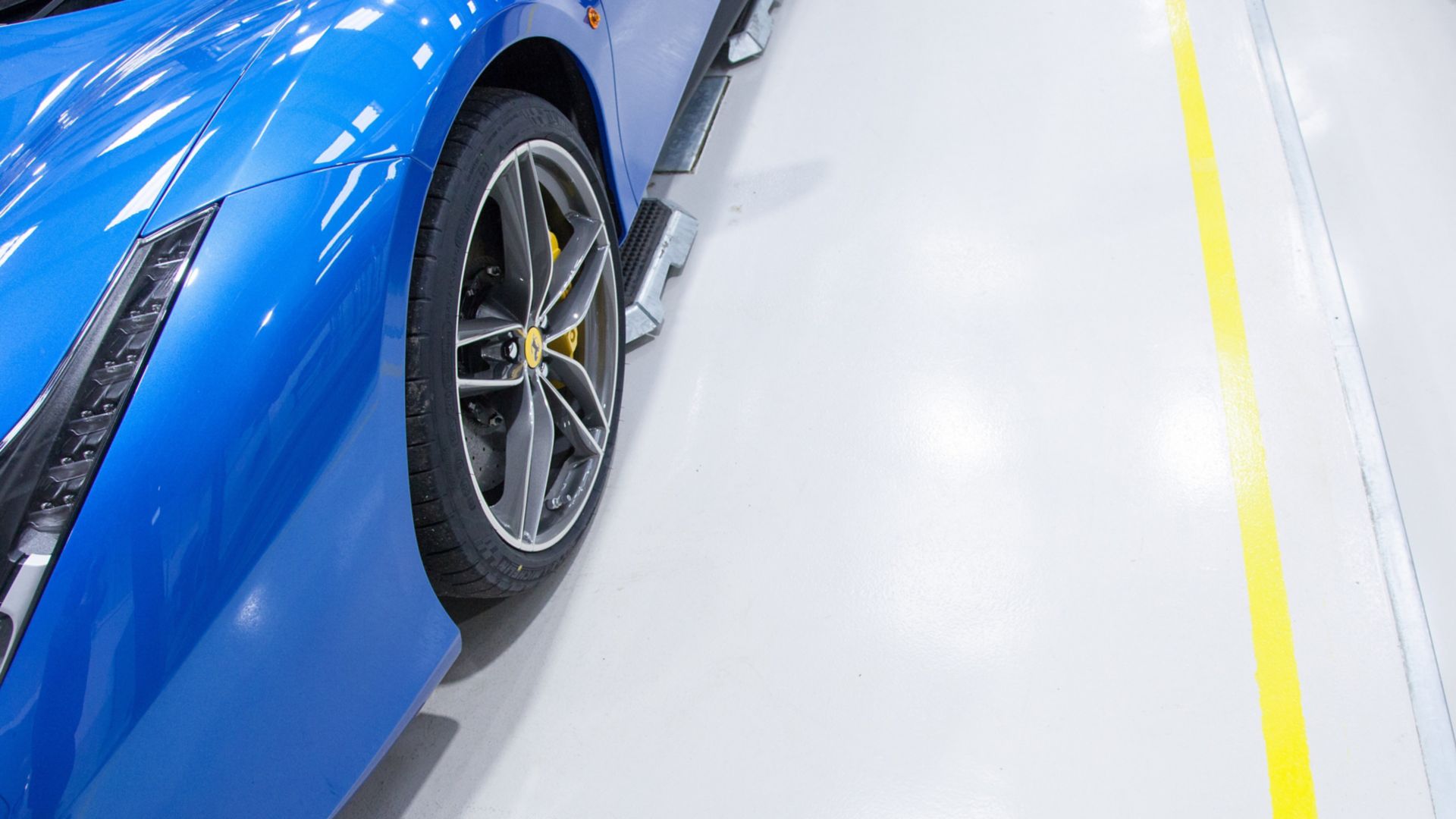2017
Midlands, United Kingdom
Construction of an award winning, BREEAM Excellent, engine production facility in the UK
The designers were looking for a highly durable integral coloured floor hardener rather than a surface applied resinous material. The main advantage of an integral finish is reduced maintenance and the fact it will not require re applying or replacing as a result of regular use, this is often the case with surface applied coatings. The client was also keen to combine this approach with the most sustainable concrete mix that was practically achievable to help achieve the required BREEAM Excellent Rating.
In the tender phase of the concrete industrial floor, a major competitor promoted their “Sustainability Calculation Tool” offering a sustainable concrete mix. This led to the situation that the customer requested such information and approach from Sika UK too.
Technical Solution
Concrete formulation: Sikament®-700 HRWRSikafloor®-2 Syntop colored surface hardener offered the best technical and long term solution to providing a low maintenance high performance sustainable floor.
Sika's Sustainable Approach
To differentiate from the competitor and to respond to the customer’s demands, Sika executed a full system approach not only taking the impact of the concrete slab itself into consideration, but including also the subsequently applied flooring system. Sika’s Global Product Sustainability Group performed a Life Cycle Assessment (LCA) of various solutions to help the customer choosing the optimized solution.
In order to show the benefits from using a High Range Water Reducer (HRWR), two flooring systems with similar performance are assessed through LCA: a traditional flooring system is compared to a system whose concrete mix contains the HRWR Sikament® 700. Both flooring systems include a concrete layer and a dryshake flooring hardener Sikafloor®-2 SynTop and are designed specifically for the project. It is clear that adding a HRWR allows reducing both cement and water content of the concrete mix, and the LCA allowed quantifying the benefits from such a reduction from an environmental perspective.
The client was highly satisfied alongside with Sika UK, who finally won the tender with this innovative and sustainable approach. “Sustainability has finally helped to secure the additional 30,000 m2 slab (admixtures and dry shake), but more importantly Sika has proved the capability and commitment to providing a sustainable and still practical solution”, statement Sika UK.
The project allowed Sika to demonstrate its competence and expertise in sustainability, including all relevant quantitative contributions to a sustainable high performance flooring solution to fulfill the customer requirements also
from an economic and technical point of view.
Products Used
Sikament®-700
Sikafloor®-2 Syntop
The Sika Life Cycle Assessment (LCA) Approach
LCA is a standardized method to assess and compare the inputs, outputs and potential environmental impacts of products and services over their life cycle. LCA’s are increasingly recognized as the best way to evaluate the sustainability of products and systems. The LCA can greatly assist our customers in evaluating Sika’s products and systems namely by providing quantitative data on their environ-mental profile. This enables the differentiation of products that may have similar performance, but greater differences concerning their environmental impact – where obviously the lower, the better.
Sika carries out LCA’s according to the ISO 14040 series and the Standard EN 15804. The impact assessment methodology used is CML 2001. The LCA results are shown for the following four relevant impact categories requested from the client:
- Global Warming Potential (GWP) [kg CO2-eq.] (“carbon footprint”) – is the potential contribution to climate change due to greenhouse gases emissions.
- Primary energy [MJ] (“energy footprint“) – is the total amount of primary energy from renewable and non-renewable resources
- Acidification Potential (AP) [kg SO2-eq.] – describes the conversion of air pollutants, such as sulphur dioxide (SO2), into acids, which have a wide variety of impacts (e.g., in form of acid rain) on soil, water, organisms and materials.
- Eutrophication Potential (EP) [kg PO4-eq.] – describes the potential for excessive enrichment of aquatic or terrestrial ecosystems with nutrients, nitrogen and phosphorus being the most important, which may cause an adverse shift in species composition and biomass production.
| Global Warming Potential (GWP): | 6% [= 200 tons CO2-eq.] | |
| Primary Energy (CED), non renewable resources: | 3% [= 430 GJ] | |
| Primary Energy (CED), renewable resources: | 5% [= 68 GJ] | |
| Acidification Potential (AP): | 5% [= 68 GJ] | |
| Eutrophication Potential (EP): | 3% [= 15 kg PO4-eq.] |
Project Participants
Sika Organization
Sika UK

